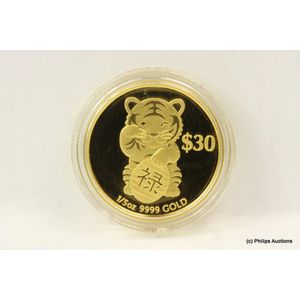Chinese Hardwood Throne Chairs with Carved Medallions
You must be a subscriber, and be logged in to view price and dealer details.
Subscribe Now to view actual auction price for this item
When you subscribe, you have the option of setting the currency in which to display prices to $Au, $US, $NZ or Stg.
- Burr - Burr (or in the USA, burl) is the timber from the knotted roots or deformed branch of the tree, which when cut, displays the small circular knots in various gradations of colour. It is always cut into a decorative veneer, most commonly seen as burr walnut on 19th century furniture.
- Kakiemon Porcelain - Kakiemon porcelain was made from the 16th to the 19th century in the Arita area of Japan, and is generally agreed to include some of the finest porcelain made in Japan. It is decorated with polychrome enamels over glaze, the most popular colours being underglaze blue and enamels of green, blue, turquoise yellow and persimmon red.
The body of a Kakiemon object is pure white porcelain while the enamel overglaze motifs incorporate Japanese and Chinese designs, but leave much of the white surface unpainted. The name derives from the family of potters who are associated with this style of pottery.
Early Kakiemon porcelain was unmarked, and marks on later objects were variable and unreliable.
Kakiemon porcelain was first imported into Europe by the Dutch at the end of the 17th century, and became extremely popular, resulting in Kakiemon-style imitations being produced by European potteries including Bow, Chelsea and Worcester in England, Mennery, Samson and St. Cloud in France, Delft in Holland and Meissen in Germany.
It's rare for an original Kakiemon object to come onto the market, and almost all sold nowadays is of European origin, and described as Kakiemon pattern or Kakiemon style. - Rosette - A stylised circular-shaped disk with turned or carved decoration decoration applied to a surface, or carved into the surface, especially used in ceramics, jewellery, furniture, sculpture and textiles. Also known as a boss or a paterae or patera.
This item has been included into following indexes:
-
Chinese furniture, chairs
- chairs 89
- chairs, throne 19
Visually similar items

Britains circus set 8665, limited edition no.1059/3000 (E-M box M)

A ruby and diamond cluster ring, the oval cut ruby of 1.38cts surrounded by round brilliant cut diamonds, mounted in 18ct white gold, ring size N.

1945 Australian Services Team, scorecard 'R.A.A.F. v Royal Air Force' with 12 signatures including D.K.Carmody, J.A.Workman & Keith Miller.

An Australian gold year of the tiger coin, boxed with presentation case, 24ct yellow gold, issued by Perth mint in 2010 for the Chinese Astrological series for year of the tiger, coin number 165. 6.22grams
